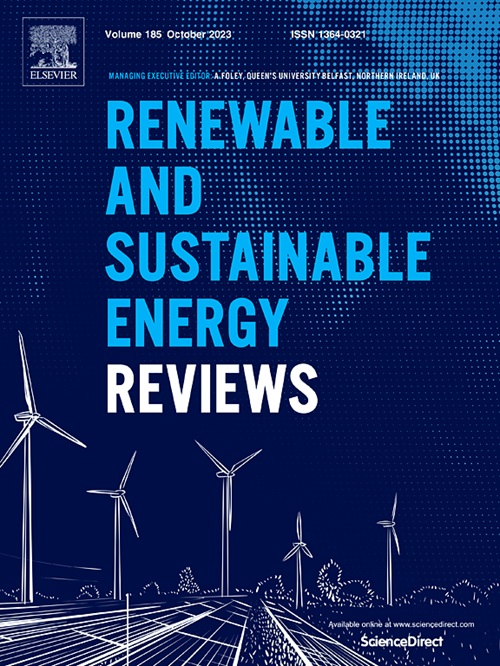电气化铁路牵引负荷模型及建模方法研究综述
IF 16.3
1区 工程技术
Q1 ENERGY & FUELS
引用次数: 0
摘要
随着电气化铁路特别是高速铁路的不断扩大,牵引负荷占总电力负荷的比重显著增加。建立牵引供电系统的牵引负荷模型对于牵引供电系统的设计、运行以及对电力系统的影响评估具有重要意义。本文概述了电气化铁路牵引负荷相关的关键问题。系统总结了牵引负荷特性、模型、建模方法的研究动态和成果,以及它们的可比性和实用性。首先,分析了牵引载荷的电特性和时空特性。其次,根据牵引载荷的建模要求和应用场景,对现有牵引载荷模型进行分类和比较。然后,回顾了牵引载荷建模方法的研究现状,重点介绍了牵引载荷的确定性和不确定性建模方法。分析比较了各种牵引负荷建模方法的优缺点。最后,重点介绍了牵引负荷建模的趋势,包括牵引负荷预测、多随机变量建模、数据驱动方法以及人工智能和物联网的集成。本文全面介绍了牵引负荷建模、现状和未来展望,并为选择合适的牵引负荷模型提供了指导。本文章由计算机程序翻译,如有差异,请以英文原文为准。
A review of research on traction load models and modeling methods for electrified railways
As the electrified railways, especially high-speed railways, continue to expand, the proportion of traction load in overall power load is increasing significantly. Establishing a traction load model is crucial for the design and operation of traction power supply system (TPSS) and the evaluation of impact on power systems. The paper provides an overview of key issues related to traction loads in electrified railways. It systematically summarizes research trends and achievements on traction load characteristics, models, and modeling methods, as well as their comparability and practicality. Firstly, we analyze the electrical and spatiotemporal characteristics of traction loads. Secondly, based on the modeling requirements and application scenarios of traction loads, this paper classifies and compares existing traction load models. Then, we review the current research status of traction load modeling methods, with a focus on deterministic and uncertainty modeling methods for traction loads. The advantages and disadvantages of various traction load modeling methods are analyzed and compared. Finally, it highlights trends in traction load modeling, including traction load forecasting, multi random variable modeling, data-driven approaches, and integration of AI and IoT. This paper presents a comprehensive survey on traction load modeling, current practices, and future outlook, while providing guidance for selecting appropriate traction load models.
求助全文
通过发布文献求助,成功后即可免费获取论文全文。
去求助
来源期刊

Renewable and Sustainable Energy Reviews
工程技术-能源与燃料
CiteScore
31.20
自引率
5.70%
发文量
1055
审稿时长
62 days
期刊介绍:
The mission of Renewable and Sustainable Energy Reviews is to disseminate the most compelling and pertinent critical insights in renewable and sustainable energy, fostering collaboration among the research community, private sector, and policy and decision makers. The journal aims to exchange challenges, solutions, innovative concepts, and technologies, contributing to sustainable development, the transition to a low-carbon future, and the attainment of emissions targets outlined by the United Nations Framework Convention on Climate Change.
Renewable and Sustainable Energy Reviews publishes a diverse range of content, including review papers, original research, case studies, and analyses of new technologies, all featuring a substantial review component such as critique, comparison, or analysis. Introducing a distinctive paper type, Expert Insights, the journal presents commissioned mini-reviews authored by field leaders, addressing topics of significant interest. Case studies undergo consideration only if they showcase the work's applicability to other regions or contribute valuable insights to the broader field of renewable and sustainable energy. Notably, a bibliographic or literature review lacking critical analysis is deemed unsuitable for publication.
 求助内容:
求助内容: 应助结果提醒方式:
应助结果提醒方式:


